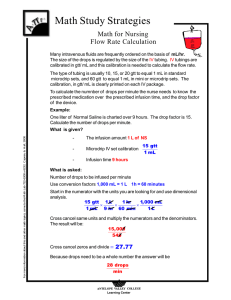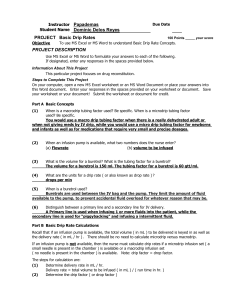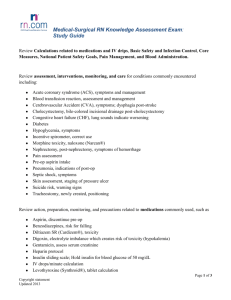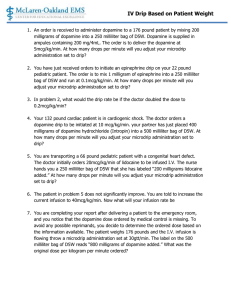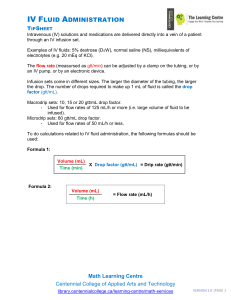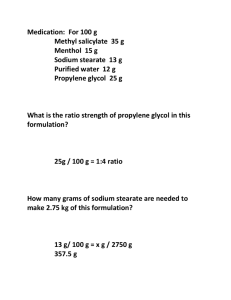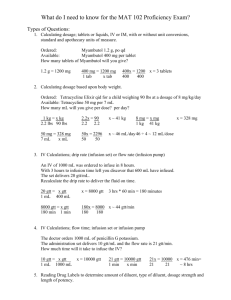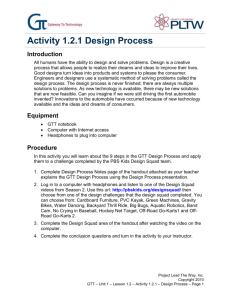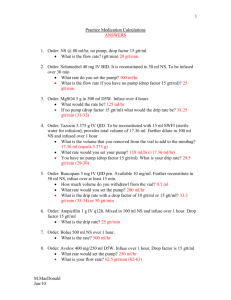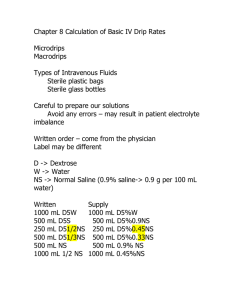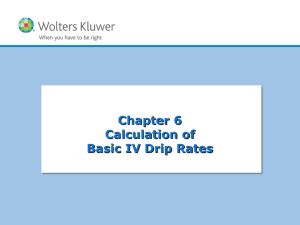Mathematics - papademas.net
advertisement
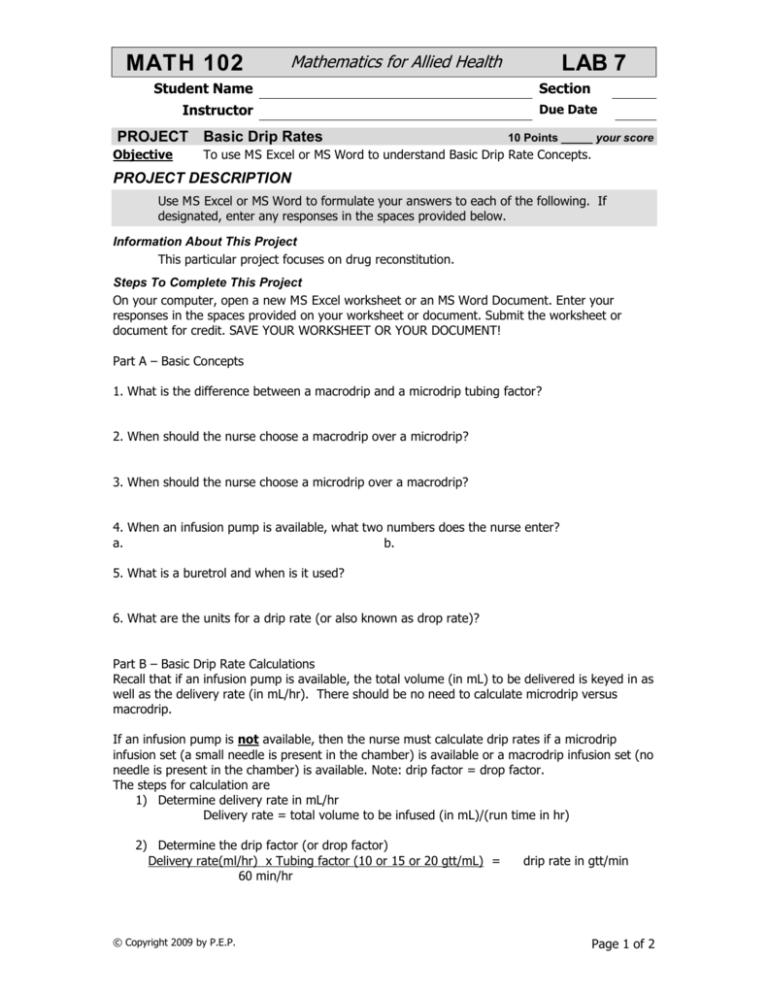
MATH 102 Mathematics for Allied Health Student Name Instructor PROJECT Basic Drip Rates Objective LAB 7 Section Due Date 10 Points _____ your score To use MS Excel or MS Word to understand Basic Drip Rate Concepts. PROJECT DESCRIPTION Use MS Excel or MS Word to formulate your answers to each of the following. If designated, enter any responses in the spaces provided below. Information About This Project This particular project focuses on drug reconstitution. Steps To Complete This Project On your computer, open a new MS Excel worksheet or an MS Word Document. Enter your responses in the spaces provided on your worksheet or document. Submit the worksheet or document for credit. SAVE YOUR WORKSHEET OR YOUR DOCUMENT! Part A – Basic Concepts 1. What is the difference between a macrodrip and a microdrip tubing factor? 2. When should the nurse choose a macrodrip over a microdrip? 3. When should the nurse choose a microdrip over a macrodrip? 4. When an infusion pump is available, what two numbers does the nurse enter? a. b. 5. What is a buretrol and when is it used? 6. What are the units for a drip rate (or also known as drop rate)? Part B – Basic Drip Rate Calculations Recall that if an infusion pump is available, the total volume (in mL) to be delivered is keyed in as well as the delivery rate (in mL/hr). There should be no need to calculate microdrip versus macrodrip. If an infusion pump is not available, then the nurse must calculate drip rates if a microdrip infusion set (a small needle is present in the chamber) is available or a macrodrip infusion set (no needle is present in the chamber) is available. Note: drip factor = drop factor. The steps for calculation are 1) Determine delivery rate in mL/hr Delivery rate = total volume to be infused (in mL)/(run time in hr) 2) Determine the drip factor (or drop factor) Delivery rate(ml/hr) x Tubing factor (10 or 15 or 20 gtt/mL) = 60 min/hr © Copyright 2009 by P.E.P. drip rate in gtt/min Page 1 of 2 MATH 102 Mathematics for Allied Health Student Name LAB 7 Section 1. Ordered: Gentamycin 100 mg/100ml IVPB q8h. The IV handbook states that it should be given over 90 min. What rate will you set on your IV pump? 2. The doctor ordered an IV to be given from 8am to 4pm. What is the run time? 3. Order: D5W 1000 mL q6h IV What is the flow rate if there is an infusion pump? ________ mL/hr 4. Order: Infuse 500 mL packed RBC's within 4 hours. Drop factor is 10 gtt/ mL Flow rate: _________ gtt/min 5. Order: Infuse 1L NS @ 150 mL/hr Drop factor: 15 gtt/ mL Flow rate: ________ gtt/min 6. Order: Vancomycin 1g q12 hours Supply: Vancomycin 1 g in 250 mL D5W to be given over 1 hour Flow rate: ________ mL/hr on the PLUM infusion pump 7. Order: Tobramycin 60 mg IV in 60 mL D5W to be infused over one hour. Drop factor of the Buretrol is 60 gtt/mL Flow rate _____ gtt/min 8. At 0800 the patient has 400 mL IV solution infusing at 75 mL/hr. At what time do you anticipate the IV bag will be empty? 9. Order: 2500 mL D5RL to run at 125 mL/hr How long will this IV run? Drop factor 10 gtt/mL Flow rate: ____ gtt/min 10. At 1130 hrs, your patient has 150 mL left in his IV bag. It is infusing at 30 gtt/min. Drop factor is 15 gtt/mL. Do you have enough IV solution left to go to lunch (30 min) now, without changing the IV bag? © Copyright 2009 by P.E.P. Page 2 of 2
